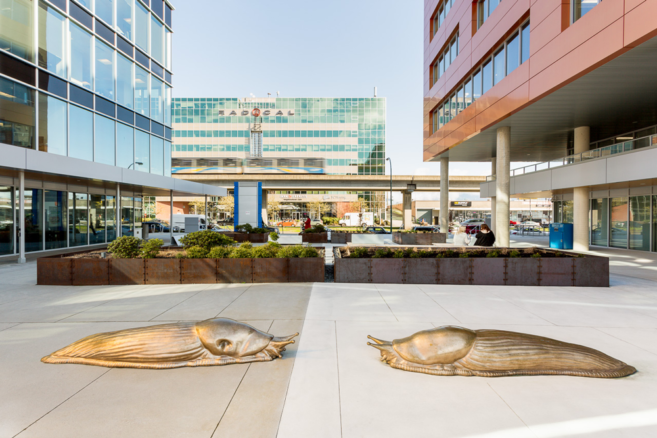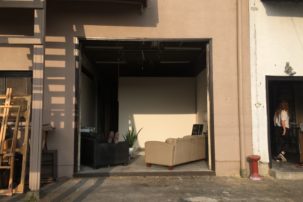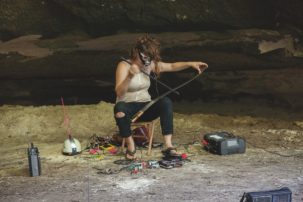Melanie O’Brian’s introduction to Vancouver Art & Economies—“Specious Speculation,” published in 2007 in anticipation of the 2010 Vancouver Winter Olympics—examines Vancouver’s switch from a solely resource-extraction economy to an increasingly symbolic, globalized economy. The city’s daringly speculative real-estate market is the most obvious of these industries to develop out of that change, but the art market is another industry of significance.
“The city is gambling its future vis-a-vis the Olympics by presenting to the world a cleaned-up image of itself absent of social inequities,” O’Brian wrote back then. “In doing so, the city reveals how marginalized groups, even the art community, may be vulnerable in the urban development scheme.”
In the nine years since the Olympics, what’s emerged is perhaps not such a clear delineation between perpetrator (“urban development”) and victim (“art community”) as O’Brian hypothesized. Rather, in my view, there’s a fumbling, symbiotic relationship between the two, and this relationship is particularly visible in the case of Vancouver’s commercial art galleries.
In many urban centres, commercial art galleries rely on their place within a city and on the branding of their neighbourhoods to help make international market associations. A gallery district in Bushwick, for example, rides a great deal of its cultural cachet solely on its location. In Vancouver, the Olympics aided in that process, as well as promoted what might be considered a new stage of placemaking—and arts placemaking in particular—within the city.
In the visual arts, the neighbourhood most closely aligned with the effects of the 2010 games is what has now been coined “The Flats”—a chunk of land adjacent to the once-contentious, now-copacetic Olympic Village. The district is generally designated as between Main Street and Clark Street, Industrial Avenue to 7th Avenue, home to commercial galleries including Equinox Gallery, Monte Clark Gallery, Gallery Jones and Macaulay & Co. Fine Art, as well as artist-run-centre grunt gallery and the new Emily Carr University of Art and Design campus. Former Emily Carr president Ron Burnett once described the neighbourhood as a pivot point that connects east and west Vancouver—and “East of Main” once signified an important class designation.
The term for The Flats emerged around 2012, corresponding with the first Flats Block Party (a multi-gallery open house), as well as Equinox’s relocation from South Granville to their current 525 Great Northern Way gallery. As event founder Jennifer Winsor of the former Winsor Gallery (now the project-based Winsor Art Projects) put it in 2016, “Over a short period of time, we [at area galleries] realized we had to market ourselves to be recognized as a district, so we branded ourselves…It’s good to have a name.”
The last Flats Block Party was held in 2017, but the moniker remains connected to a general brand awareness of Vancouver’s creative and artistic community. Today, the term is used less and less by the local and national arts community—in part due to the closure of galleries like Winsor’s in the area, and a move out by other prominent dealers.
But this term does appear more and more, now, in the marketing of condo and real-estate developments: A garish ad campaign for one office development named “South Flatz,” with the letters written in obnoxious pink graffiti font, was the most eye-roll inducing case of real-estate marketing in a slew of recent campaigns. (The building also promises “Community that inspirez.”)
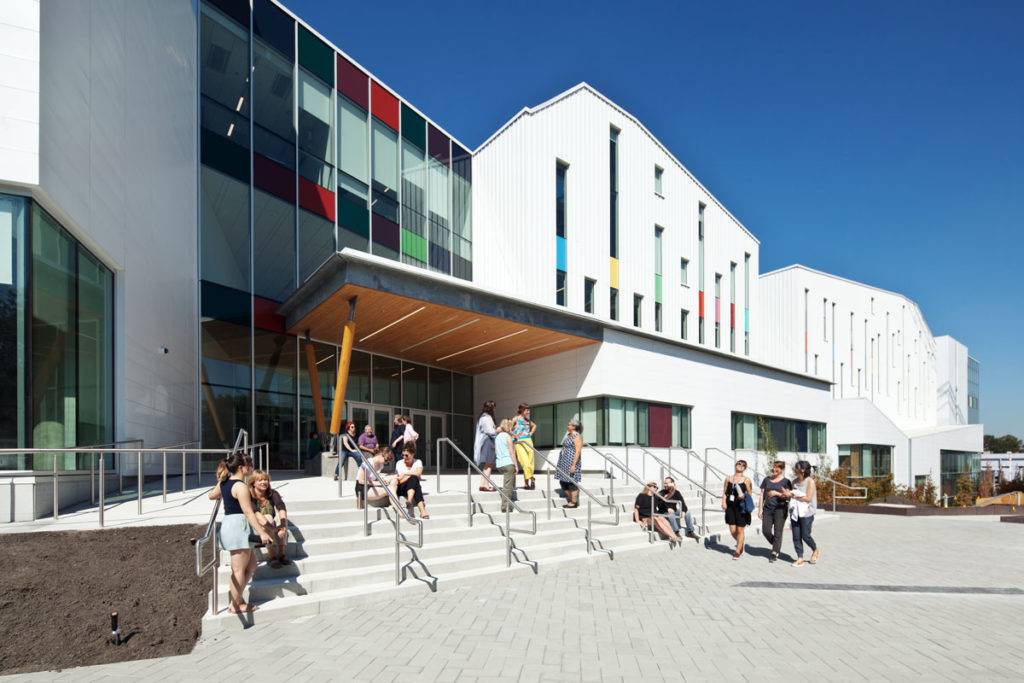 The main entrance to the new Emily Carr University of Art and Design at 520 East 1st Ave. in Vancouver.
The main entrance to the new Emily Carr University of Art and Design at 520 East 1st Ave. in Vancouver.
Speaking to some dealers today yields more views on these neighbourhood shifts, and their perceived connections (or not) to both art values and real-estate values.
Back in 2006, Catriona Jeffries was among the first to relocate her gallery from South Granville—a gallery district then also rising in real-estate values and commercial activity—to what eventually became known as The Flats district. At the time, the area was an industrial zone and technically in the neighbourhood of north Mount Pleasant, just below Strathcona.
“I was there before the Olympics, before Olympic Village was there,” Jeffries reflects over the phone of her time in the area. She was also there before Emily Carr University went public in 2012 with its plans to move from Granville Island to Great Northern Way. She recalls: “Breweries started to move in, the school was there, and then there were galleries following. There was this ‘where are you in the city, galleries?’ and then The Flats were not so scary.”
Looking for space that was larger, less expensive and more adaptive to the needs of her artists and gallery, Jeffries was also motivated to move because of certain spatial politics that had started to affect the art-viewing experience on South Granville.
“We ended up needing to leave” South Granville, Jeffries explains. “I was also not interested in the commercial/retail condition of the neighbourhood that surrounded me. I moved there [East 1st] to be in a relational condition to the working practice of a ‘studio.’” (Other dealers, such as Gallery Jones, which moved out from South Granville after Jeffries did, noted Lamborghini, Bentley and Ferrari dealers to be among those driving up rents in the Granville area.)
Yet a similar set of conditions soon prompted Jeffries to move out of The Flats last year and into another area of East Vancouver. By 2012, she says, she noticed a change in the area—not just with having commercial art galleries as neighbours again, but also in the transition the neighbourhood had made in terms of that mass branding. “The area around me turned into a commercial/retail zoning so there was—what did they call it?—they branded the area ‘The Flats,’” Jeffries recalls.
That condition of The Flats, combined with an increase in rent and increased need for storage and administration space, prompted Jeffries to begin looking for new space a few years ago.
Earlier this year, Jeffries at last opened her new gallery in a former industrial workshop in East Vancouver. “This is the highest zoning of industrial,” Jeffries says of her new neighbourhood. But what happens there doesn’t stay in place. “What’s interesting about the gallery’s practice is that 80 per cent of the work that I do—we do—here leaves Vancouver.”
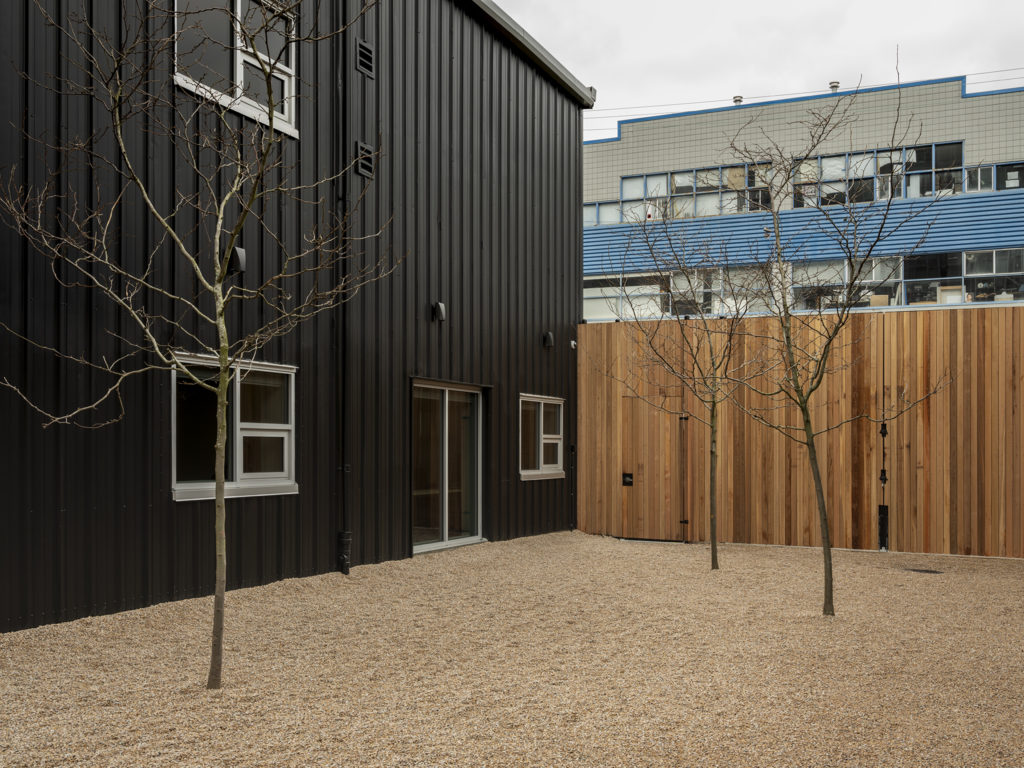 Catriona Jeffries at 950 East Cordova St. in Vancouver. Photo: Rachel Topham Photography. Courtesy Catriona Jeffries.
Catriona Jeffries at 950 East Cordova St. in Vancouver. Photo: Rachel Topham Photography. Courtesy Catriona Jeffries.
The new Catriona Jeffries gallery space is located just north of Hastings and Campbell, in a neighbourhood of the Downtown Eastside that has also experienced tremendous change in just the last few years—and yes, real-estate change too. Some have called it “a cultural no-man’s land,” but the area has been home to artist studios, DIY cultural spaces and smaller galleries for many years. Most recently, the popular artist-studio space Red Gate Arts Society was forced to leave its East Hastings space after the building was acquired by Lululemon founder Chip Wilson’s Low Tide Properties and rent, according to Red Gate director Jim Carrico, was tripled.
Wilson has invested heavily in the neighbourhood lately, renovating the 800-block. The city’s re-zoning encouraged Wilson to purchase 275 feet of property between 855 and 895 East Hastings at $10.7 million, and 10 lots between 828 and 868 East Hastings for $7.25 million.
Hastings between Carrall and Heatley has been designated a “no-condo zone” as part of the Downtown Eastside Local Area Plan, but that did not halt the quick sell-out of all 280 units priced between $199,000 and $439,000 at the Strathcona Village development. As part of the city’s zoning, 70 units were designated as social housing.
This neighbourhood—as yet un-renamed—is in the midst of an indisputable shift.
Yet it is a shift that Jeffries does not see herself playing much of an intentional part in. “I’m not here to gentrify this neighbourhood,” Jeffries states. “I have no interest in that. I am here to do our work.” When questioned further, she adds, “I never had the perception that this was a desirable, changing neighbourhood…I think that [is] a perception now that you see us here, perhaps, I don’t know. I don’t see this as a big, changing neighbourhood.”
As one of the only Canadian galleries regularly attending the large international art fairs such as Art Basel, Catriona Jeffries plays a key role in what is considered Vancouver art around the globe. The way the gallery functions locally, as Jeffries sees it, exists largely outside of the trends, speculation and inevitable social and economic changes that have come to define Vancouver’s supercharged real-estate market. But the fact remains: internationally, the gallery is a leading brand representative. O’Brian, in her preface to Vancouver Art & Economies, also cited an oft-quoted 2003 Canadian Art article by Sisi Penaloza: “When you collect one of her [Catriona Jeffries] artists—say a Ron Terada or a Damian Moppett—you are ostensibly ‘collecting Vancouver.’”
Jeffries may not be concerned or interested if galleries and economic growth follow her. In any case, that is beyond her control. But, in my view at least, the neighbourhood’s rapid makeover is an inevitable aftershock of high-profile commercial spaces like Jeffries’s moving in.
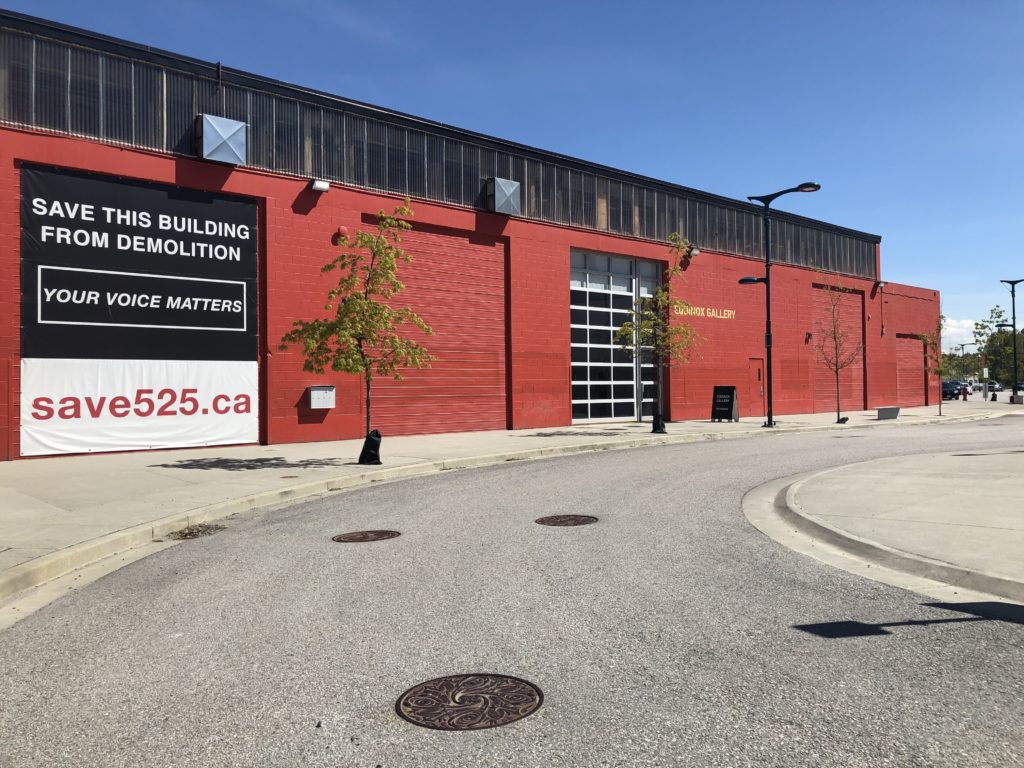 Equinox Gallery at 525 Great Northern Way in Vancouver. Courtesy Equinox Gallery.
Equinox Gallery at 525 Great Northern Way in Vancouver. Courtesy Equinox Gallery.
For others art dealers, commercial development within and around The Flats has, they say, created a positive environment for their businesses.
Andy Sylvester, owner of Equinox Gallery, has been a champion of creating an artistic community there since he relocated in 2012. “We moved from South Granville, where we were for 25 years, originally as a project space, but then I decided to renovate [the building] and into several gallery spaces…to attract Monte Clark to come so we can build more of a community,” Sylvester says.
Sylvester shares the 525 Great Northern Way space with Monte Clark Gallery. According to Sylvester, this building housing the two galleries always acknowledged the possibility of demolition to make way for the planned Broadway SkyTrain line. That line is now slated to go right through the gallery building, and Sylvester and Monte Clark have made a concerted campaign to have those plans reconsidered.
“We’ve just been encouraging TransLink, the city, and the universities which own the space, to look at it and ask, ‘Is there another way that you could configure this conversation and this line to leave this building, and others, intact? And build a neighbourhood that would [add to] the cultural component that’s already here?’” Sylvester says. “But we’ve been unsuccessful so far.” If the SkyTrain line proceeds as planned, Sylvester is unsure of where the gallery may end up next. It’s something that is top of mind for his artists, most of whom live in or around Vancouver.
“Honestly, it’s a weekly conversation,” he says of the potential move. “Our artists are very concerned that a) we stay in business and b) we can move to a place that is architecturally compelling and has some semblance of a neighbourhood and some possibility of a cultural future.”
One possibility for Sylvester is (like Jeffries, I note mentally) moving further east.
“I like to have neighbours, so I’m trying to find out if there’s a place near [East Vancouver] that would work, or something in South Vancouver down in that area where real estate isn’t completely unattainable,” says Sylvester. “And I’ve looked in a lot of other places.”
For newer galleries of less substantial monetary means, the challenge of finding affordable space in proximity to buyers and artists has long been a struggle.
There’s no better poster boy for this than Wil Aballe, owner of Wil Aballe Art Projects (WAAP). In 2012, Aballe opened his one-bedroom Mount Pleasant apartment as a gallery, and has since then relocated many times to more traditional brick-and-mortar locations.
WAAP’s latest location is on East Hastings, just a couple blocks away from Catriona Jeffries. His most recent exhibition, by local artist Ryan Quast, spoke overtly to real-estate disruption in the city: the show consisted of Quast’s documentation of possessions he had left behind in the streets and alleyways of Vancouver.
“It’s not so much that I can control the situation, the kind of space the gallery is in, because I have neither money nor influence, and you need both to find the space that’s ideal for you,” Aballe laughs.
The gallery’s spatial impermanence continues; its current address is slated to be demolished at an unknown future date. “Real estate in Vancouver is kind of like surfing,” Aballe says. “Sometimes you’re riding the wave, sometimes you’re drowning, and sometimes the board is smacking you upside the head.”
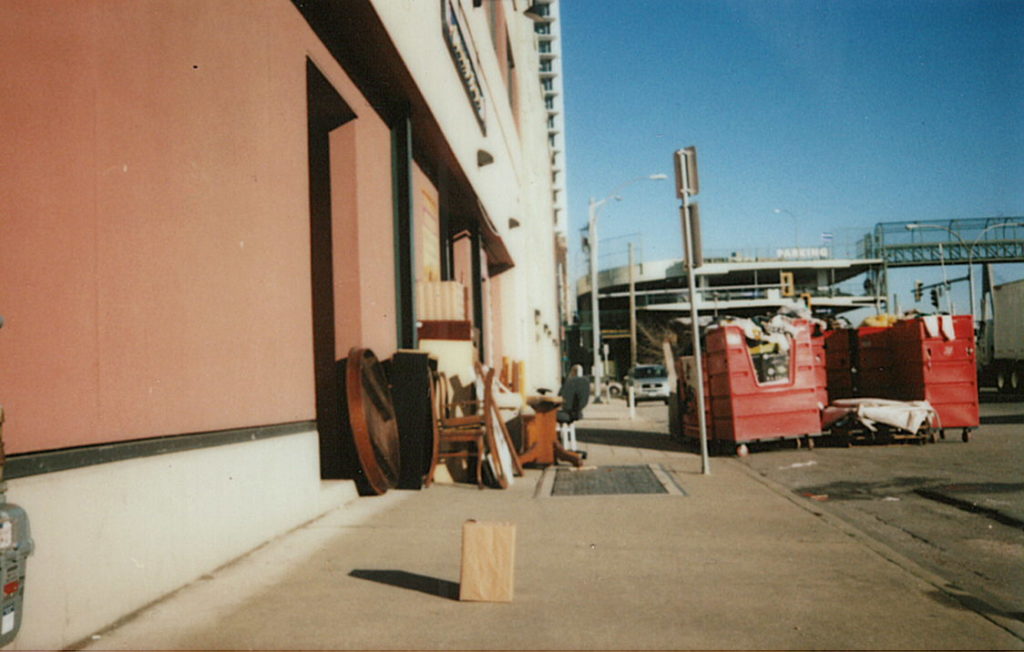
Ryan Quast, Box 253 (detail), 2019. Polaroid and typewritten page in matted frame, 40.6 x 50.8 x 2.5 cm overall. Courtesy Wil Aballe Art Projects.

Ryan Quast, Box 239 (detail), 2019. Polaroid and typewritten page in matted frame, 40.6 x 50.8 x 2.5 cm overall. Courtesy Wil Aballe Art Projects.

Ryan Quast, Box 219 (detail), 2019. Polaroid and typewritten page in matted frame, 40.6 x 50.8 x 2.5 cm overall. Courtesy Wil Aballe Art Projects.

Ryan Quast, Box 255, 2019. Polaroid and typewritten page in matted frame, 40.6 x 50.8 x 2.5 cm overall. Courtesy Wil Aballe Art Projects.

